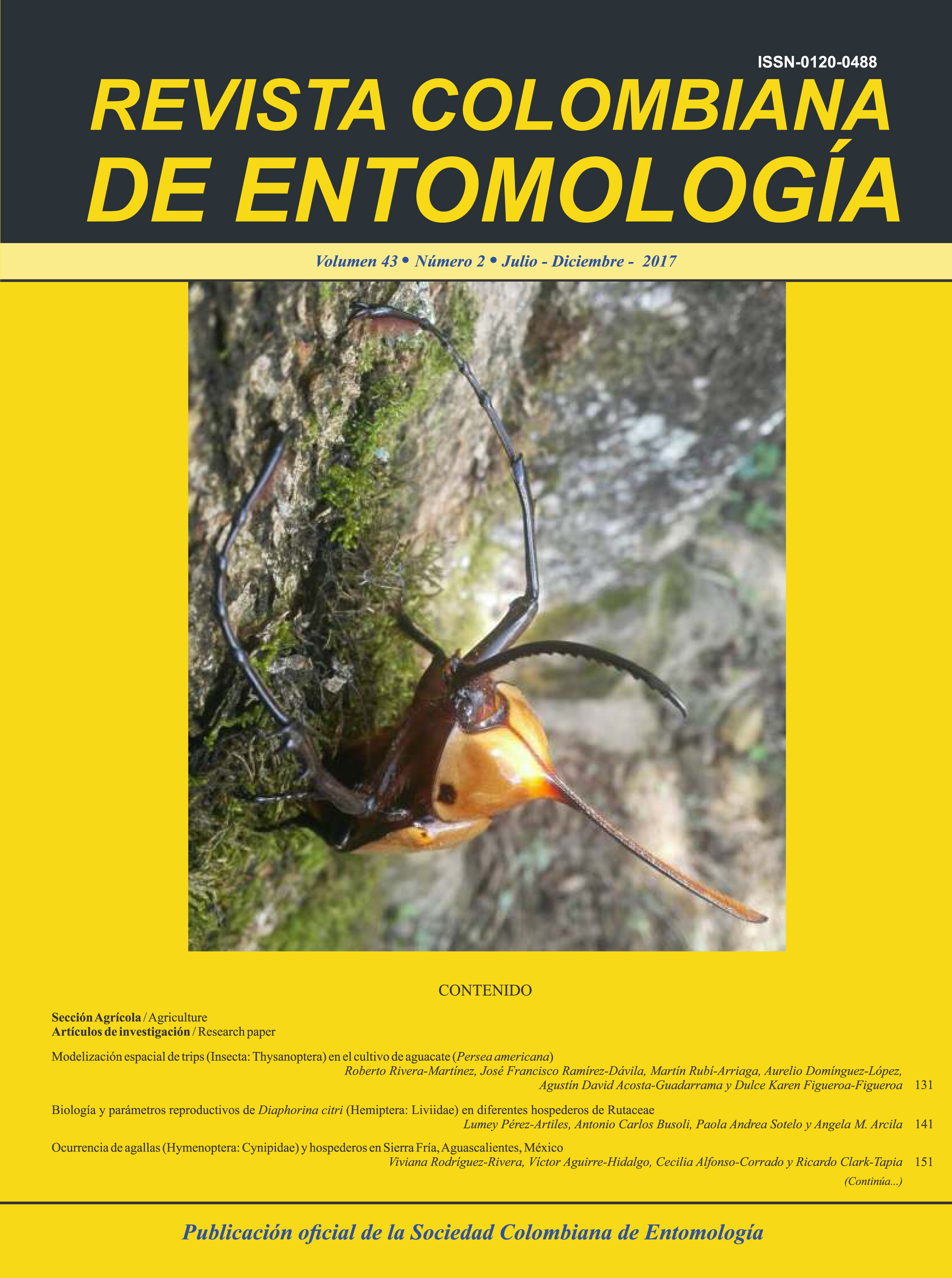Transmission parameters of citrus leprosis virus by Brevipalpus yothersi (Acari: Tenuipalpidae)
Main Article Content
Citrus leprosis, caused by (Citrus Leprosis Virus, CiLV) is an important, economic and quarantine phytosanitary problem for citrus industry in producer countries. Presence of CiLV in Colombia was confirmed in 2004 at Meta and Casanare states; the red flat mite Brevipalpus yothersi Baker (formerly identified as Brevipalpus phoenicis Geijskes) (Acari: Tenuipalpidae), is recognized as the principal vector of this virus in the country. Transmission parameters as acquisition access period, inoculation access period and percentage of viruliferous mites with CiLV, were carried out through transmission tests and molecular analysis at CORPOICA “La Libertad” Research Center, Meta, Colombia. By testing acquisition periods between 10 minutes and 72 hours, it was found B. yothersi mites needs 30 minutes feeding to acquire the virus on Valencia orange leaves (Citrus sinensis L.) Osbeck with symptomatic lesions. The minimum period required by mites to transmit the virus to C. sinensis plants was 10 minutes. For transmission periods between 10 minutes to 24 hours, receptor leaves show leprosis lesions percentages between 25 % and 68.75 %. According to transmission and RT-PCR tests, 40 % of mite population acquired the CiLV-C2 after three days of feeding on leprosis lesions. This results increase knowledge of plant - virus - vector interactions, which is essential for establishment of prevention and disease management programs.

This work is licensed under a Creative Commons Attribution-NonCommercial-ShareAlike 4.0 International License.
Authors retain the copyright on their work and are responsible for the ideas expressed in them. Once a manuscript is approved for publication, authors are asked for a publication license for the term of legal protection, for all territories that allows the use, dissemination and disclosure of the same.





